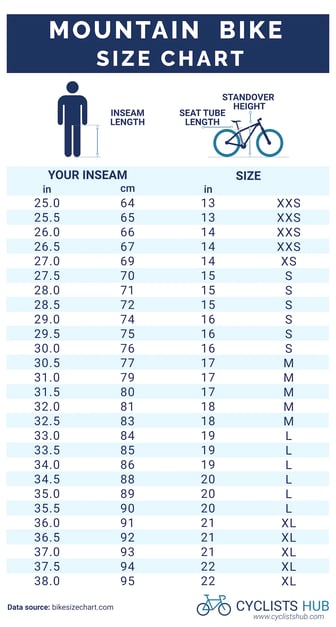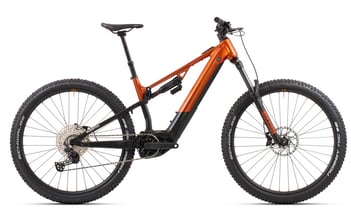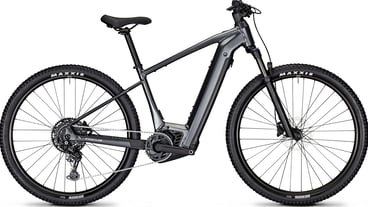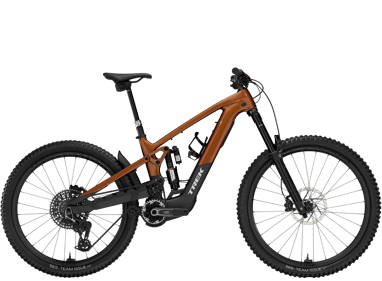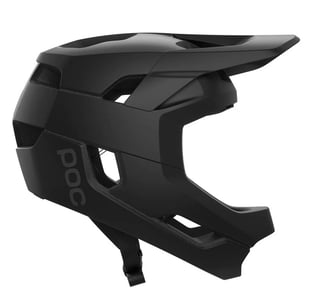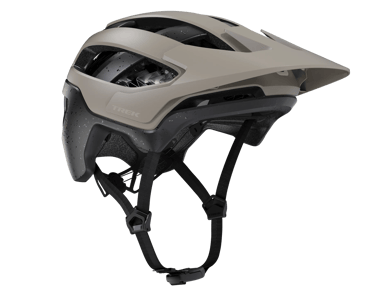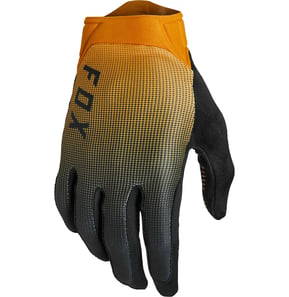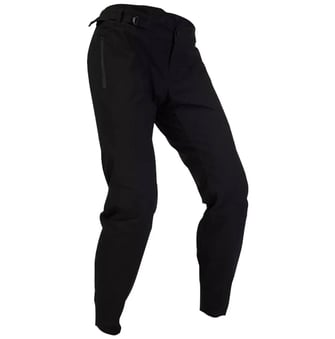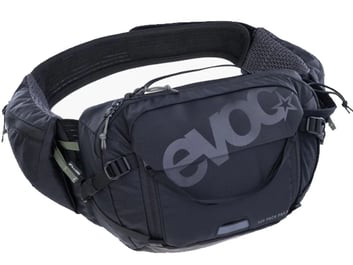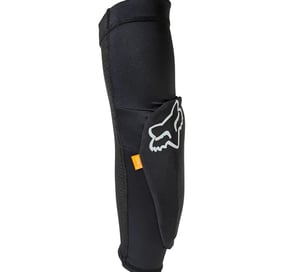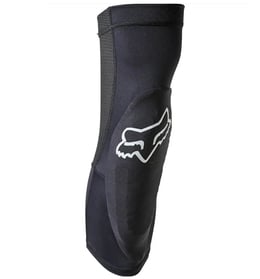Guide to Choosing Your First Electric Mountain Bike
Discover essential tips for selecting your first electric mountain bike. Learn about bike types, motor power, battery life, and fit to ensure you find the perfect eMTB for your needs. Get ready to explore trails with confidence!
PRODUCT REVIEWS
5/8/202412 min read

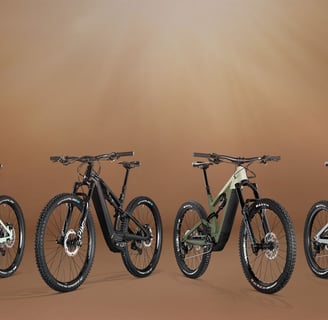
When embarking on the journey to purchase your first electric mountain bike (eMTB), a clear understanding of your riding style is paramount. eMTBs are designed for various terrains, and identifying your preferences will help narrow down your options. Whether you plan to tackle steep climbs, aim for fast downhill rides, or venture through cross-country trails, knowing how you intend to use your bike is essential.
Next, consider the terrain you will predominantly ride on. Different eMTBs are optimized for specific environments; for example, some models are tailored for rugged, rocky trails while others excel on smoother paths. If you reside near hilly regions, choosing an eMTB with a powerful motor and adequate battery capacity will enhance your riding experience. Conversely, if your intended routes are less demanding, you may opt for a more lightweight model, focusing on agility and handling.
Your fitness level is another factor that plays a critical role in the decision-making process. If you are a novice cyclist, look for a bicycle that ensures a comfortable ride without overwhelming you. Many eMTBs come equipped with various assistance levels, allowing you to adjust the pedal assist to match your fitness and experience. This feature is particularly beneficial for newcomers, as it enables a gradual progression in physical demands without compromising enjoyment.
Additionally, it is advisable to engage in test rides before making a final decision. A test ride allows you to assess comfort, handling, and performance firsthand, ensuring that the eMTB aligns with your expectations. Seek guidance from experienced riders or local bike shops, as their insights can be invaluable. They can recommend the best models based on your riding style and preferences, further assisting you in making an informed choice.
Types of eMTBs: Hardtail vs. Full-Suspension
When selecting an electric mountain bike (eMTB), one of the primary decisions involves choosing between hardtail and full-suspension designs. Each type has its unique construction, benefits, and potential trade-offs that cater to different riding preferences. Understanding these distinctions is crucial for making an informed decision.
Hardtail electric mountain bikes feature a rigid rear end, which means they do not have rear suspension. This construction results in a lighter frame, making hardtails more efficient for climbing and cross-country riding. Riders seeking speed and agility on smoother trails might find that hardtail eMTBs are the perfect fit due to their direct power transfer and minimal winding. Additionally, they tend to be more cost-effective, which is a significant consideration for beginners.
On the other hand, full-suspension electric mountain bikes are equipped with both front and rear suspension systems. This design enhances comfort and control, especially on rocky or uneven terrains. Full-suspension eMTBs absorb shocks and bumps more effectively, allowing riders to tackle challenging trails with greater confidence. While these bikes are usually heavier and more expensive than their hardtail counterparts, they offer improved traction and stability, which can significantly enhance the overall riding experience, particularly for those who prioritize comfort.
Choosing between a hardtail and a full-suspension electric mountain bike ultimately depends on the rider’s specific needs and preferences. Individuals who plan to ride primarily on dry, smooth trails may benefit more from the efficiency of hardtails. Conversely, those intending to navigate varied terrains and prioritize comfort might find full-suspension models more suitable. This nuanced understanding of both types enables prospective buyers to select an eMTB that aligns with their overall riding goals and environment.
Key Features to Look For
When venturing into the world of electric mountain bikes (eMTBs), understanding key features is crucial to making an informed decision. One of the most significant aspects is the motor power, which typically ranges from 250W to 750W. For beginners, a 250W motor is often ideal, providing enough power for tackling various terrains while maintaining a balance between performance and rideability. This moderate output helps in avoiding overwhelming experiences that might deter new riders.
Another critical feature is battery range. An eMTB equipped with a high-capacity battery can significantly enhance your riding experience, allowing for longer excursions without the need for frequent recharging. Most electric mountain bikes offer a range of 32 to 110 km on a single charge, depending on terrain, rider weight, and riding style. As a beginner, consider how far you intend to ride and choose a bike with enough battery life to support those distances, ensuring you can enjoy the adventure without worrying about running out of power.
Furthermore, the bike’s size plays an essential role in comfort and performance. Ensuring that the eMTB fits your body will enhance your overall riding experience and reduce the risk of injury. When testing bikes, pay attention to the frame size and make adjustments as necessary to find the ideal fit for your height and riding habits.
Lastly, ensure that the electric mountain bike you choose satisfies safety and usability standards. Look for features such as reliable braking systems, quality suspension, and appropriate tire size, which can significantly affect handling and stability on various terrains. Investing time to evaluate these essential features will ultimately lead to a more enjoyable and safe riding experience.
Recommendations for Entry-Level Models
When venturing into the world of electric mountain biking, selecting the right model is crucial, especially for beginners over the age of 40. Several brands stand out for their reliability, performance, and affordability in this segment. Among them, Trek, Marin, and Superior offer commendable options that cater specifically to new riders.
The Rail 5 Gen 3 is Trek's best-value long-travel e-MTB. It's equally as capable as our regular long-travel trail bikes, it just gets you back to the top in a flash. The powerful Bosch drive systems and durable part spec make for long-lasting fun.
Another excellent brand to consider is Marin, known for its user-friendly designs. The Marin Rift Zone E1 is a versatile all-mountain e-bike with a powerful Shimano EP6 motor, long-lasting 630Wh battery, and confidence-inspiring components. It's your ticket to maximizing fun on the trails.
Superior is also recognized for producing high-quality electric mountain bikes. The Superior eXF 9019B is an all-mountain e-bike. It features a lightweight aluminum frame, a powerful Bosch CX motor with 85Nm torque, and a fully integrated 625Wh battery for up to 120km range. The bike also has RockShox 160mm suspension, Shimano Deore 1x12-speed drivetrain, and Shimano MT420 4-piston brakes for reliable performance on challenging terrain.
These brands exemplify what to look for in an entry-level electric mountain bike: dependable performance, accessible price levels, and positive user feedback. Selecting from these models can greatly assist newcomers in making informed decisions while ensuring a rewarding experience on the trails.
Essential Gear for Riding
When embarking on the exciting journey of electric mountain biking (eMTB), investing in the proper gear is crucial for both safety and enjoyment. One of the most important pieces of equipment is a high-quality, properly fitting helmet. This protective gear is essential to safeguard your head against potential impacts, making it a non-negotiable item for any rider. In addition to ensuring compliance with safety regulations, an appropriate helmet should provide comfort and ventilation for long rides.
Another important accessory is a pair of gloves. E-MTB gloves are designed to enhance grip on the handlebars while also minimizing hand fatigue during extended rides. Look for gloves that offer a balance between padding and dexterity, allowing you to maintain control over your bike without sacrificing comfort.
Padded shorts are another essential item for making your rides more enjoyable. These shorts provide additional cushioning that helps reduce discomfort during long periods on the saddle. Choose padded shorts that fit snugly and offer breathability to ensure you remain comfortable throughout your ride.
Staying hydrated is vital, especially on longer eMTB adventures. Riders should consider hydration options such as water bottles or hydration packs. A hydration pack, in particular, can offer easy access to water without the need to stop, allowing you to focus on the trail ahead.
In addition to the essentials, you might want to invest in optional safety gear such as knee and elbow pads. These can provide extra protection against falls or rough terrain. Furthermore, enhancing your visibility is key for safer rides. Incorporating lights and reflective gear can significantly increase your visibility to others, especially during low light conditions. Overall, investing in the right gear will not only ensure safety but elevate your eMTB riding experience.
The Importance of Proper Fit
When purchasing your first electric mountain bike, achieving a proper fit is essential for maximizing both performance and safety. A well-fitted bike enables the rider to maintain better control, reduce the risk of injury, and enhance overall riding enjoyment. The right frame size is the foundational element; it directly influences the positioning of the rider and the bike's handling. To determine the appropriate frame size, consider your height and inseam length. Most manufacturers provide sizing charts that correlate these measurements with specific frame sizes. Utilizing these dimensions can lead to a more comfortable riding posture.
Saddle height is another critical factor in achieving a proper fit. The appropriate height allows for a full range of leg motion while pedaling and helps to prevent strain on the knees. To adjust the saddle height, sit on the bike with your heel on the pedal. When the pedal is at its lowest point, your leg should be fully extended. When you reposition your foot to the ball of your foot on the pedal, there should be a slight bend in your knee, allowing for optimal power transfer while pedaling.
Additionally, the handlebars’ position plays a significant role in rider comfort and control. Handlebars that are too high can lead to an uncomfortable riding position, while those too low may strain the back and neck. Ideally, the handlebars should be at a height that allows the rider to maintain a natural and relaxed posture while riding.
Trial and error during test rides is also invaluable for perfecting bike fit. Engaging in multiple test rides while making minor adjustments can refine the fit more effectively than any measurement alone. This process can lead to a more enjoyable and rewarding riding experience, enabling the novice rider to gain confidence and skill on the trails.
Budgeting for Your First eMTB
Purchasing your first electric mountain bike (eMTB) can be an exhilarating experience, but it is important to plan your budget carefully. The cost of eMTBs varies widely, often influenced by features, brand, and technology. Generally, you can expect to find entry-level models starting around $4,000, while mid-range bikes typically fall between $4,000 and $7,000. High-performance eMTBs can surpass $20,000. Understanding what you can afford will help you choose the right model suited to your riding style and terrain preferences.
To make the purchase more financially feasible, consider researching various brands and models online. Manufacturer websites often feature the latest eMTB designs and price lists. Additionally, look for sales at local bike shops or online retailers, especially during off-peak seasons. Planning to buy during promotional events or end-of-season sales can lead to significant savings on your investment.
Financing options may also be available. Some retailers offer payment plans or financing through third-party services, allowing you to pay over time rather than upfront. This can be a practical way to manage your budget while still getting the bike you want.
While budgeting for your first eMTB, it’s also crucial to account for hidden costs that may arise post-purchase. Taxes and shipping fees can add a significant amount to your overall expenditure. Additionally, maintenance is another important consideration; ensuring your eMTB remains in good condition is critical for safety and performance. Don’t forget to budget for necessary accessories, such as a helmet, tools for repairs, and protective gear, which can enhance your riding experience.
Finally, if you are saving for your new electric mountain bike, creating a dedicated savings plan can help you reach your goal without financial strain. Allocating a specific amount to your bike fund on a monthly basis can bring you closer to making your eMTB dreams a reality. By understanding the overall costs and potential savings strategies, you can confidently navigate the path to purchasing your first electric mountain bike.
Test Riding: What to Expect
Test riding an electric mountain bike (eMTB) is a crucial step in making an informed purchasing decision. During your test ride, you should focus on several key aspects that influence the overall experience and performance of the eMTB. One of the primary factors to consider is comfort. Pay attention to how the bike feels when you are in the saddle. The seat should be supportive enough to endure longer rides, and the frame geometry should allow you to maintain a natural riding position. If possible, ride the eMTB on varied terrain similar to your intended use to accurately assess comfort levels.
The handling of the bike is another vital consideration. It is essential to get a feel for how the eMTB responds during turns and on inclines. A responsive bike can make a significant difference in both safety and enjoyment while navigating challenging trails. Furthermore, evaluate the gear shifts during the ride. Smooth shifting improves the overall experience and makes it easier to tackle steep climbs or rugged paths. A well-functioning gear system can enhance your riding efficiency and contribute to a more enjoyable outing.
Moreover, trying multiple eMTBs is beneficial for comparing various models’ feel and performance. Each brand and model may differ in design, weight distribution, and component quality, influencing how the bike responds under different conditions. Additionally, don’t hesitate to ask questions to the salesperson. Inquire about the bike's warranty, available after-sales support, and maintenance guidelines. A knowledgeable salesperson can provide valuable insights that can aid your decision-making process. They can offer advice based on your riding style and preferences, which could be instrumental in selecting the right electric mountain bike for your needs.
Getting Involved with the eMTB Community
Engaging with the electric mountain bike (eMTB) community is an enriching experience for both novice riders and seasoned enthusiasts alike. One of the primary benefits of connecting with fellow eMTB riders is the vast pool of knowledge and resources available. Local cycling groups and online forums serve as platforms where riders can exchange tips, share experiences, and offer advice about their favorite trails, bike maintenance, and riding techniques. By participating in these discussions, beginners can accelerate their learning curve and gain valuable insights to enhance their eMTB journey.
Moreover, involvement with the eMTB community opens up a plethora of riding opportunities. Many local cycling clubs organize group rides, which are not only excellent for improving skills but also foster camaraderie among members. These events allow beginners to ride with experienced cyclists who can offer guidance and encouragement while exploring new terrains. Additionally, being part of a community can boost motivation and build confidence, making the transition to electric mountain biking both enjoyable and rewarding.
Social media platforms like Facebook and Instagram have also become invaluable resources for eMTB enthusiasts. Numerous groups and hashtags are dedicated to electric mountain biking, providing a continuous stream of inspiration, news, and events. Following dedicated eMTB accounts can keep you updated on the latest trends, gear reviews, and upcoming gatherings in your area. Attending local biking events, expos, or races can further immerse newcomers into the eMTB culture, offering firsthand experiences and firsthand connections with brands and fellow riders.
Ultimately, engaging with the eMTB community enriches the overall riding experience. By leveraging local groups, online forums, and social media resources, beginners can not only find support and advice but also form lasting friendships with those who share a passion for electric mountain biking.
Maintaining Your eMTB for Longevity
Proper maintenance of your electric mountain bike (eMTB) is crucial for ensuring its longevity and optimal performance. One of the most vital components to care for is the battery. To enhance battery life, it is advised to avoid fully discharging the battery frequently; instead, aim to charge it when it reaches around 20-30% capacity. Additionally, storing the battery in a cool, dry place and avoiding extreme temperatures will help maintain its health. Regular cleaning of the battery terminals will prevent corrosion, while ensuring that connection points are tight and secure can help avoid performance issues.
Next, understanding brake maintenance is essential for both safety and the longevity of your eMTB. Regularly inspect the brake pads for wear and replace them when needed, ensuring optimal stopping power. It is also advisable to check the brake lines for any leaks or damage, as well as to adjust the brake settings according to your riding style. Properly functioning brakes are particularly important when navigating challenging terrains, which is common when riding an electric mountain bike.
Furthermore, keeping an eye on the tire pressure is equally vital. Under-inflated tires can lead to increased rolling resistance, reducing battery efficiency and overall performance. Conversely, over-inflated tires may result in a harsher ride and a higher risk of punctures. Regularly checking the tire pressure and ensuring it is consistent with the manufacturer’s recommendations is a practice that should not be overlooked.
Lastly, paying attention to the drivetrain is essential for maintaining your eMTB. Regularly cleaning and lubricating the chain will help prevent rust and ensure smooth shifting between gears. Additionally, watch for any unusual noises or difficulties when pedaling, as these may indicate that professional servicing is necessary. Keeping your eMTB well-maintained will not only enhance its performance but also extend its lifespan, making it a worthwhile investment for years to come.
